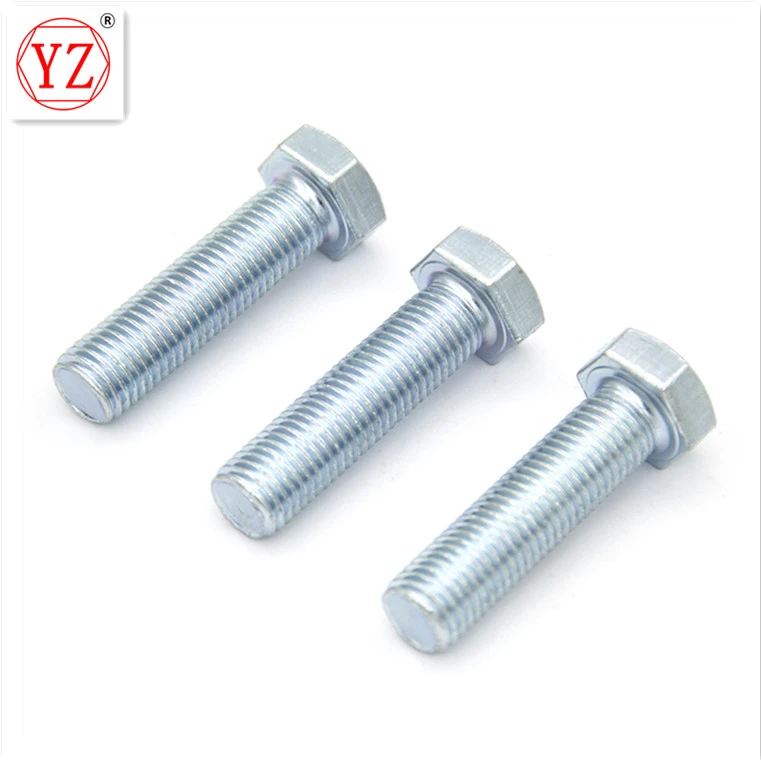Internal Hex Head Stud Bolts for Improved Torque and Secure Fastening Solutions
Dec . 14, 2024 10:31 Back to list
Internal Hex Head Stud Bolts for Improved Torque and Secure Fastening Solutions
Understanding the Stud Bolt with an Internal Hex Head
In the realm of mechanical engineering and construction, fasteners play a crucial role in ensuring the integrity and functionality of structures and machines. One noteworthy fastener is the stud bolt, particularly those featuring an internal hex head. This article delves into the features, applications, advantages, and considerations associated with stud bolts that include an internal hex head.
What is a Stud Bolt?
A stud bolt is a type of fastener that consists of a threaded rod with no head on one end, designed to be inserted into a pre-drilled hole, typically secured with nuts on either side. Unlike traditional bolts, which have a head on one end and require a pre-drilled hole, stud bolts allow for a more flexible assembly. They are dominant in applications where high tensile strength is needed and are prevalent in industries such as construction, automotive, and aerospace.
Internal Hex Head Design and Functionality
The inclusion of an internal hex head is a distinctive feature of certain stud bolts. This design utilizes a hexagonal recess, which allows for the engagement of a hex key or Allen wrench. The internal hex head provides several advantages over traditional external heads, particularly in terms of space constraints and the aesthetic appearance of the assembly.
One key benefit of the internal hex design is its ability to be used in tight spaces where access is limited. Standard bolt heads often require significant clearance to accommodate tools for installation and removal. In contrast, an internal hex head can be operated with a smaller profile tool, allowing for greater flexibility in difficult-to-reach locations.
Applications of Stud Bolts with Internal Hex Heads
Stud bolts with internal hex heads find extensive use across a variety of industries. In construction, they are used for securing beams, columns, and other structural components, where the high tensile strength of the stud is essential for maintaining stability. In the automotive industry, they are often used in engine components and other critical areas where reliability is paramount.
Another significant application is in piping systems, particularly in flanged joints and pipe supports. The internal hex design allows for better torque application, reducing the risk of stripping when tightening. This is particularly critical in high-pressure applications, where leaks can have dire consequences.
stud bolt with internal hex head

Advantages of Stud Bolts with Internal Hex Heads
1. Space Efficiency As mentioned, the internal hex head allows for better accessibility in constrained spaces, enabling technicians and engineers to work in areas that would otherwise be difficult to reach.
2. Enhanced Torque Application The design of the internal hex head enables the use of high-torque tools, resulting in a more secure fastening and minimizing the risk of loosening over time.
3. Reduced Risk of Stripping The hexagonal recess provides greater engagement for tools, significantly lowering the chances of stripping the fastener compared to traditional heads.
4. Aesthetic Appeal Internally hexed fasteners often present a cleaner look when installed, making them suitable for visible applications where aesthetics are a concern.
Considerations When Using Stud Bolts with Internal Hex Heads
While stud bolts with internal hex heads offer numerous advantages, there are considerations to keep in mind. The installation process requires the appropriate tools, such as hex keys or Allen wrenches. Additionally, it's essential to ensure compatibility between the fastener and the materials it is securing, as variations in material can affect the strength and durability of the joint.
Furthermore, proper torque specifications must be adhered to during installation to prevent over-tightening or under-tightening, both of which can compromise the integrity of the assembly.
Conclusion
Stud bolts with internal hex heads are an essential component in modern engineering and construction. Their unique design offers enhanced performance in various applications, allowing for efficient use in tight spaces while providing mechanical strength. As industries continue to evolve, the demand for innovative fastening solutions like these stud bolts is bound to rise, showcasing their significance in ensuring the robust assembly of structures and machinery. Understanding their features and applications helps engineers and technicians make informed choices, optimizing the effectiveness of their projects while promoting safety and reliability.
Latest news
-
High-Quality Panel Stud Bolt Reliable Panel Stud Bolt Factory & Suppliers
NewsJul.08,2025
-
High-Precision Fine Thread Locknuts Manufacturer & Supplier Custom Solutions
NewsJul.08,2025
-
PH Imperial Stud Bolt – High Strength Fasteners from Leading Supplier & Factory
NewsJul.07,2025
-
High-Quality Allen Wrench Bolts Leading Factory, Company & Suppliers
NewsJul.07,2025
-
Wholesale Ball Stud Bolt - High Quality Supplier & Factory Price Reliable Wholesale Ball Stud Bolt Company
NewsJul.06,2025
-
High-Strength Alloy Bolts Manufacturer & Supplier Quality Alloy Fasteners Factory
NewsJul.06,2025
